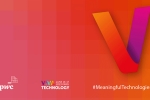Issues in the space sector

Space: a cross-disciplinary sector
The Space sector is extensive in its reach, and extremely diverse in its scope: it benefits numerous industries and human activities. The space sector is going through a deep transformation in the various segments of its value chain. As a result of these changes, new entrants appears, new business models emerge and technological development accelerate, prompting the traditional players to review their strategies and to proactively adapt.
An industry that influences entire sectors of the economy and society
The space sector is becoming more and more a key enabler across industries and services. Satellite communication has historically been a key space domain with obvious extensive commercial value. Satellite positioning is deeply intertwined in our daily life and part of countless services in almost all industries. In the last years, space imaging data, from earth observation satellites , has been growing out of its niche market status into a new market segment, thanks to advancements in cloud storage and cloud computing which make data accessible, and easily processable: this allows integrated applications based on multi-signal data, as well as advanced analytics with fusion of multiple data sources (demographic, sociological, geographical, etc.) to produce added-value insights that enable businesses to improve their performance on the market. This has the potential to expand the reach and the impacts of space to even more industrial sectors, and the current trends show a clear progression towards wider space data analytics adoption.
New Space
What was until a few years ago a sector entirely driven by institutional demand and government funding is now attracting more and more private capital, from the tech industry but also from other non-space industries. Barriers to entry are diminishing, and a new start-up scene is developing globally, under the moniker of NewSpace (distinguishing themselves from the Old Space driven by government programmes).
Halo projects with ambitious scope from high profile tech entrepreneurs, including the world-famous Elon Musk and Jeff Bezos have also brought space, and space exploration, back in the general public sphere, increasing the overall space sector mindshare exponentially and opening up to visionary new commercial projects around space manufacturing and around in situ space resources exploitation for planetary human exploration.
Next to these large endeavours, a fertile scene of downstream-oriented start-up is also flourishing: these companies aim to sell space data on a massive scale and are developing the low-cost technologies and the IT tools and capabilities required to do so.
Innovation has also thriven thanks to a fresh approach to technology development that privileges cost-effective solutions over state-of-the-art. New production systems such as 3D printing, new combinations of fuel such as methane to maximise the reuse of launcher stages, the miniaturisation of satellites, and the use of off-the-shelf technical solutions and standard components, have contributed to a virtuous circle of cost reductions. Today’s nano-satellites only cost some tens of thousands of euros, substantially less than the many tens of millions of euros for conventional telecommunications satellites.
New markets for space data
By leveraging constellations of hundreds of low-orbit satellites of all sizes, new entrants in the space sector plan to deliver data in support of custom services in diverse fields, ranging from precision agriculture to weather forecasts to air & road traffic management and so on. Every day, new use cases are found for the data collected by Earth Observation satellites (like monitoring drought or harvest yields, observing deforestation or beach erosion rates, checking whether car parks are full, or observing offshore platforms). The full potential of space data exploitation is still untapped.
Due to ever increasing, ubiquitous connectivity needs, the demand for low cost broadband is on the rise, naturally driving up the demand for telecommunication satellites. A large part of the world’s population relies on the internet, yet even today a significant portion of human population still does not have access to it. Satellite constellations are a possible effective solution as they provide affordable global connectivity, reaching remote areas without the need for expensive terrestrial infrastructure.
New business models and new risks
These paradigm shifts are moving the space sector into a new industrial era of mass production and wider data and services exploitation. Incumbents and new entrants are banking on the commercial markets to prove their investments profitable. Who will their customers be? How will space data and space-based services be sold? With no easy answer in sight ahead of the actual market proof, and with inherent risks to be mitigated (regulatory changes, export control, commodization of the market, etc.), careful strategic thinking is needed.
PwC advises stakeholders in the space sector
Contact us







